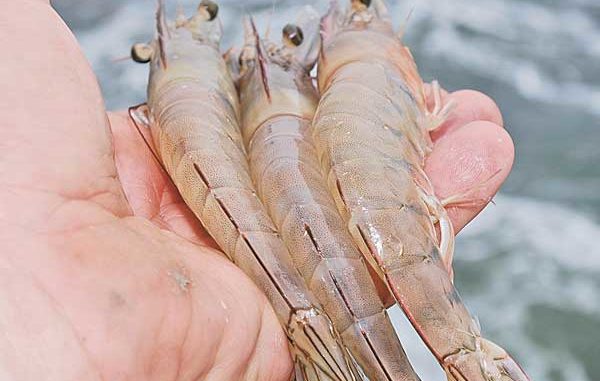
Got a small tract? So what? Put some time and effort in this month, and you’ll increase your deer haul this year.
In the marsh, almost everything eats shrimp. And in Louisiana, almost everyone eats shrimp.When I moved to New Orleans 40 years ago, I developed a friendship with my barber, a man named Morris Trippi. The man loved two things. He loved to fish, and he loved to eat shrimp, or as he called them, “strimps.”
Trippi, who is now long gone, had his tonsorial palace in uptown New Orleans and lived in St. Bernard Parish. But a couple times a week during white shrimp season, he would drive to Bucktown to get his beloved lake shrimp.
Although some white shrimp can be found on the market just about year round, the traditional inshore white shrimp season begins in August and extends into December.
During that time, everything from fish to sea birds feasts on the incredibly common crustacean. A few end up in the nets of the surviving commercial shrimpers who are hanging on in the face of abyssal prices, and an even fewer end up in the livewells of recreational fishermen.
White shrimp large enough to catch in August began life much earlier, probably April, when they were spawned in shallow offshore waters from 25 to 95 feet deep. Shrimp mate by mature males sticking sperm packets to females’ undersides. As the females release their eggs in the water at night, sperm are released from the packets. Fertilization of the eggs relies on chance meetings of the gametes in the water. Each female shrimp may spawn up to four times.
White shrimp have a protracted spawning season, and spawn from April through at least September and probably until November. This produces wave after wave of shrimp all the way to winter. When water temperatures cool, adult shrimp quit spawning, and at about 60 degrees, all shrimp growth stops.
Growth in overwintering survivors does not start again until water temperatures reach about 68 degrees.
Each white shrimp female will release between 500,000 and 1 million eggs per spawn. Once an egg is fertilized, it sinks to the bottom until it hatches 10 to 12 hours later into a most unshrimp-like creature called a nauplius larva, only a little over 1/100th of an inch long.
During the first 24 to 36 hours, the non-feeding naplius will molt four more times, living off of its yolk supply, before emerging as another weird-looking creature called a protozoeal larvae. At this stage, the larva begins feeding on microscopic plankton.
A protozoea will undergo three more molts and grow to 1/10th of an inch long before reaching its last larval stage, a mysis. This larval stage at least faintly resembles what most people think a shrimp should look like.
Three molts later, the shrimp finally reaches the post-larval stage, and looks even more like a shrimp, an anorexic one, but still, a shrimp.
At this stage, about 10 days have elapsed since the egg was spawned, and the postlarva is still less than the width of a small human fingernail.
During the entire larval and postlarval stage, the creature has been planktonic, floating at the mercy of water currents and tides. For the tiny creature to have a realistic chance of survival, at one of its two postlarval stages, it must be swept by the water into estuarine marsh waters, called nursery grounds.
It is in these warm and fertile waters that young shrimp grow rapidly. At favorable temperatures, a juvenile shrimp will grow an inch every 15 to 21 days.
As the young shrimp grow, they tend to gradually move from the shallowest marsh waters into the slightly deeper waters of ponds and small bayous and lakes, then finally into even deeper lakes and bays. During this time, the animals continue to feed, grow and, of course, be fed upon by a myriad of predators.
Scientists have estimated that 40 percent of all juvenile shrimp die each week, most of them by being eaten by something. As astonishingly large as this number is, it is lower than the mortality rate on the eggs and larvae before they were swept into the marsh from offshore.
When white shrimp reach about 5 inches long, they may begin their movement from estuaries into offshore waters. This movement is highly variable from bay to bay, and the size at which they move varies from season to season and year to year.
As long as shallow estuarine waters are warm, white shrimp seem reluctant to move into Gulf waters. During warm periods, most of the movement that does occur takes place at night and on strong outgoing tides.
But when waters cool, movement offshore accelerates. During strong cold fronts, the movement becomes a mass exodus, as the shrimp flush out on strong wind-driven tides. Larger shrimp will leave the comfort of their marsh nursery grounds before smaller shrimp.
Many over-wintering white shrimp will return to estuaries when temperatures rise in late winter. These shrimp grow rapidly, and are very noticeable by their large size when they are caught in the spring mixed with the new crop of small brown shrimp.
White shrimp seldom live longer than a year, although mark-recapture studies have shown that the occasional one will live as long as four years. Females grow larger than males, reaching 8 inches in length. Males grow to slightly over 7 inches long.
Mature females, called “roe shrimp,” develop their eggs just beneath their tail shells along both sides of the vein. The opaque eggs are easily visible through the shells of the shrimp.
Jerald Horst is the author of Trout Masters: How Louisiana’s Best Anglers Catch the Lunkers. To order, visit www.lasmag.com or call (800) 538-4355.


